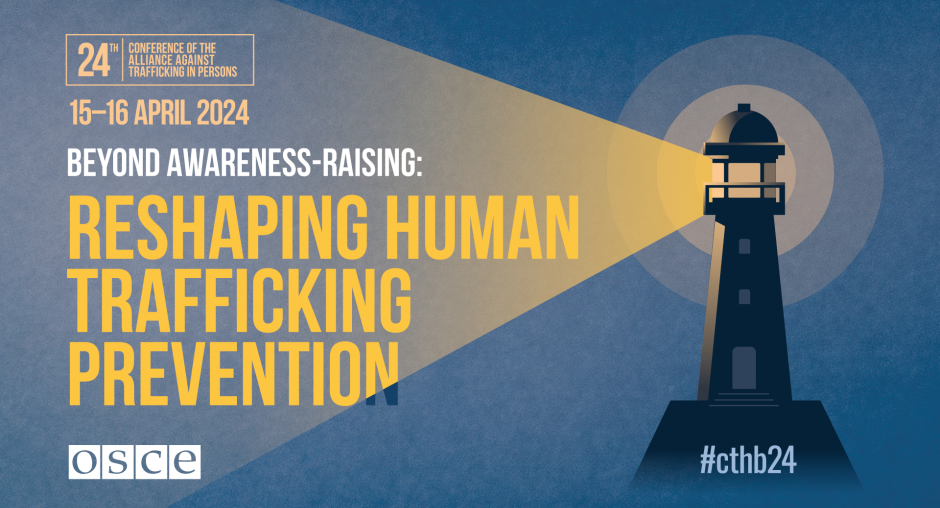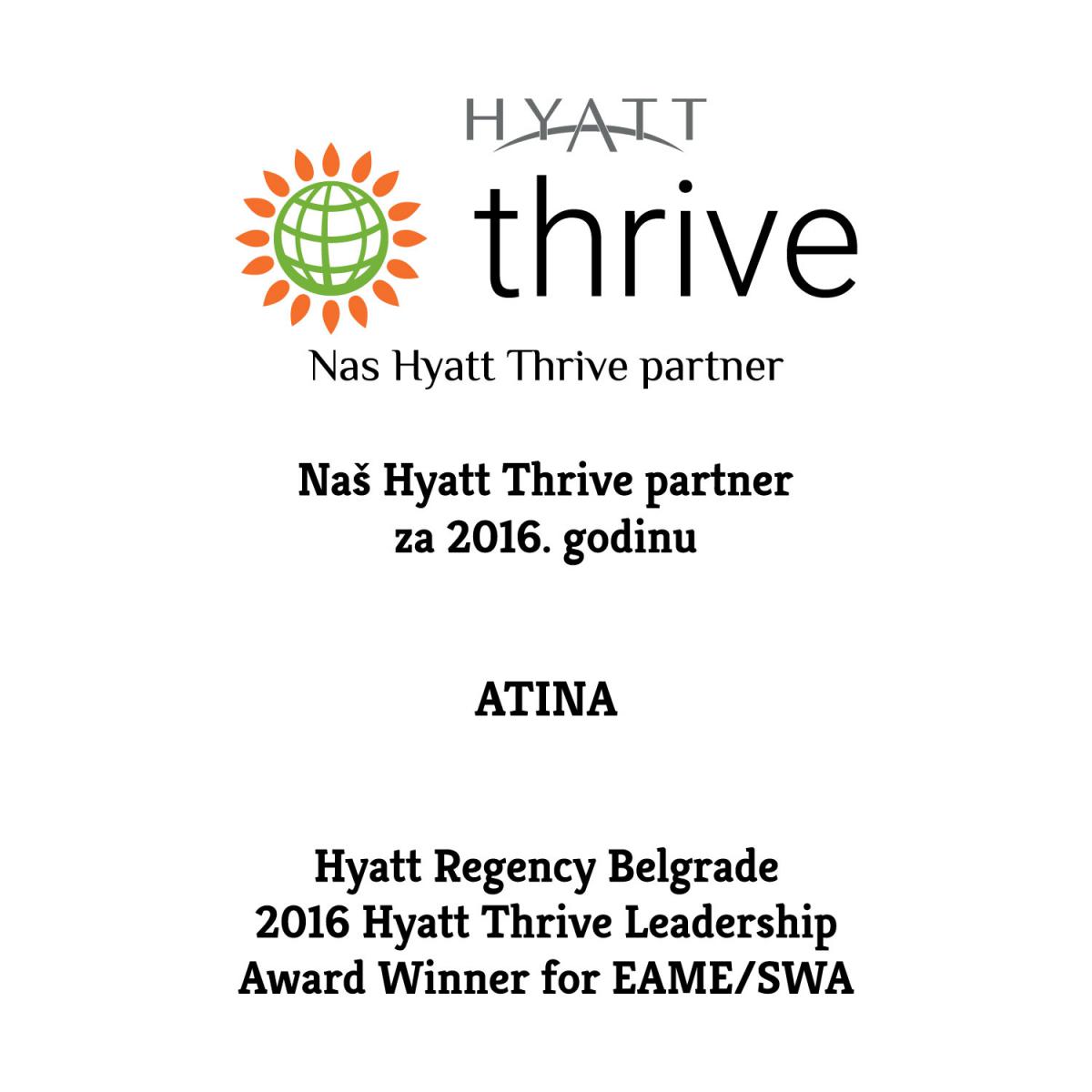Hotline: +381 61 63 84 071
Beyond Awareness-Raising: Reshaping Human Trafficking Prevention

Beyond Awareness-Raising: Reshaping Human Trafficking Prevention
An Overview of the OSCE’s 24th Conference of the Alliance against Trafficking in Persons
Report made by Lauren Larsen
On April 15th and 16th, the Organization for Security and Co-operation (OSCE) in Europe hosted the 24th Conference of the Alliance against Trafficking in Persons in Vienna. Fifty-seven OSCE member states were called upon to reimagine ways of trafficking prevention to combat rapidly evolving methods of coercion and exploitation. Awareness campaigns have been an essential first step in addressing this issue, but tackling human trafficking requires moving beyond that and creating concrete solutions.
The conference included panel discussions about targeted vulnerabilities and overlooked forms of human trafficking, challenges to anti-trafficking responses, and measures to reshape prevention for the future effectively. Side events allowed participants to explore topics like the nexus between storytelling by women for women, youth and diaspora engagement in prevention, the dynamics of trafficking of minorities, the intersection of child rights and global supply chains, and how private data exchange can prevent human trafficking.
Innovative solutions to human trafficking rely on the collaboration of various stakeholders, including governments, civil society organisations (CSOs), and the private sector. Panelists urged that prevention strategies be structural, data-informed, evidence-based, and comprehensive. The resources that enable traffickers to thrive exceed those allocated to stop them; therefore, prevention programs must leverage partnerships to provide durable, sustainable, and cost-effective solutions.
Labour exploitation in the EU reached its highest prevalence in 2022
Globally, 50 million people endure modern forms of slavery, and 27.6 million suffer forced labour. Labour exploitation in the EU reached its highest prevalence in 2022, representing 41.1% of all cases, which, for the first time, is almost equal to that of sexual exploitation (41.4%). Women and girls represent over 90% of sexual exploitation victims and over 70% of trafficked victims in the world. One of the rising forms of exploitation that often targets men and boys is forced criminality, which increased from 276 reported cases in 2018 from 1,394 in 2019 to 1,748 in 2020.
Last year was the deadliest year on record for migrants, claiming the lives of a more significant number than ever before. One hundred ten million people are forcibly displaced worldwide and are at higher risk for sexual and other forms of exploitation; for example, 95% of trafficking victims in Greece are migrants. As for children, this group accounts for 1 in 4 total trafficking cases, and forty-five per cent of trafficked persons from Roma communities are children. Statistics as bleak as these require actors to reimagine prevention by understanding the factors that increase one’s chances of being trafficked in the first place.
Migration is one example of a circumstance that compounds and exacerbates vulnerabilities to trafficking. Russia’s invasion of Ukraine is the most significant factor that has increased migration and vulnerability in Europe today. People on the move are pushed into positions of vulnerability, placing them at risk of exploitation. However, steps can be taken to reduce the risk of human trafficking for migrants.
Another particularly vulnerable group whose cases are underreported is persons with disabilities. Disability is an enhanced vulnerability, a feature of exploitation, a result of trafficking, and a factor in accessing justice, protection, employment, and health and rehabilitation services. Persons with disabilities are primarily targeted for forced begging as passersby typically feel more emotionally inclined to give money to an individual with a disability. This group is also susceptible to trafficking schemes because they face barriers to employment, leading them to accept job positions online and fall victim to labour exploitation. To combat this, prevention programs must be inclusive to all and incorporate the unique perspectives and opinions of persons with disabilities who have experienced human trafficking, as they are the furthest left behind. Different forms of trafficking must be better taught to this group, and support services should be customised to meet their specific needs. Ultimately, gaps must be bridged between agencies working on anti-trafficking and victim support efforts and organisations focused on disability inclusion.
Poverty, unemployment, ethnicity, gender, lack of education, childhood neglect, and mental health issues are among some of the many vulnerabilities that traffickers exploit. Persons belonging to minorities, persons with disabilities, and those forced to migrate for climatic, conflict, or prejudicial reasons are even more susceptible to sexual, labour, and criminal exploitation. Traffickers have increasingly identified and targeted vulnerabilities in people and communities.
If actors are not addressing tech-facilitated trafficking, they are not addressing trafficking at all
Online platforms are a burgeoning space for human traffickers to carry out illegal activities. In the modern age, technology has become the infrastructure by which exploitation is initiated and facilitated. Social media and other digital spaces have caused victims from at least 60 countries to be trafficked, a reach that was traditionally impossible. The internet has been abused by traffickers, contributing to an increasing size of cyber scam centres. Panellists argued that anti-trafficking efforts need to utilise digital technology to a greater and faster degree than traffickers. One explained that if actors are not addressing tech-facilitated trafficking, they are not addressing trafficking at all.
Optimistically, over 300 tech tools support the fight against human trafficking through online mechanisms, and 13% of these tools relate to data trends and mapping, which can connect partners and contribute to victim identification. Going forward, investments need to be made in individuals with computer science experience. It was recommended that NGOs hire professionals with these skills to incorporate and analyse data mapping software into current systems. Data scientists are also discovering new ways to protect the privacy of victims’ sensitive and personal information. Breakthroughs in confidential computing will enable information siloed in one organisation’s database to be shared with a more comprehensive anti-trafficking network. Thus, encrypted data-sharing has the potential to improve the efficiency of the referral system, which is crucial as only 1% of trafficking victims are identified.
OSCE’s Alliance conference was a successful forum for proposing tangible solutions to human trafficking, specifically focusing on the future of prevention mechanisms. When solutions are honest, people become more resilient and self-reliant, making traffickers less able to exploit them.
The following are key recommendations of participants:
● When it comes to prevention strategies, actors should take stock of what works, listen to survivors, and address overlooked or underestimated trafficking strategies.
● If a comprehensive understanding of diverse vulnerabilities is effectively developed, better prevention measures can be created.
● People must have access to economic opportunities and social support; otherwise, they will find themselves in the hands of traffickers, perhaps even marketing themselves and accepting captivity in exchange for employment so they can support their families.
● States have to establish educational and social measures to shed light on the realities of human trafficking so people can protect themselves from it.
● Human trafficking prevention training needs to be implemented in community touchpoints: hospitals, schools, etc. (this integration approach is essential from a funding perspective).
● Prevention and intervention strategies must be gender-inclusive. In the same vein, domestic violence as a causal factor for human trafficking needs to be better recognised during the creation of action plans.
● Trafficking occurs in countries and across borders; therefore, international agents must cultivate cooperation and motivate partners, especially those of origin and destination countries.
● Border patrol agents need to be trained to detect what a trafficking situation looks like.
● Partnerships should expand across sectors, like cyberspace, to keep up with the evolving methods used by traffickers to capture and exploit their victims.
● Implementing a standardised set of indicators can serve as a foundation for establishing a national mechanism for victim identification.
● Strategic measures should be created to ensure trafficking is handled uniformly and prosecuted cases as a trafficking offence in courts.
● Criminalizing the known use of services of a trafficking victim and sex buying is vital.












 FACEBOOK
FACEBOOK TWITTER
TWITTER YOUTUBE
YOUTUBE